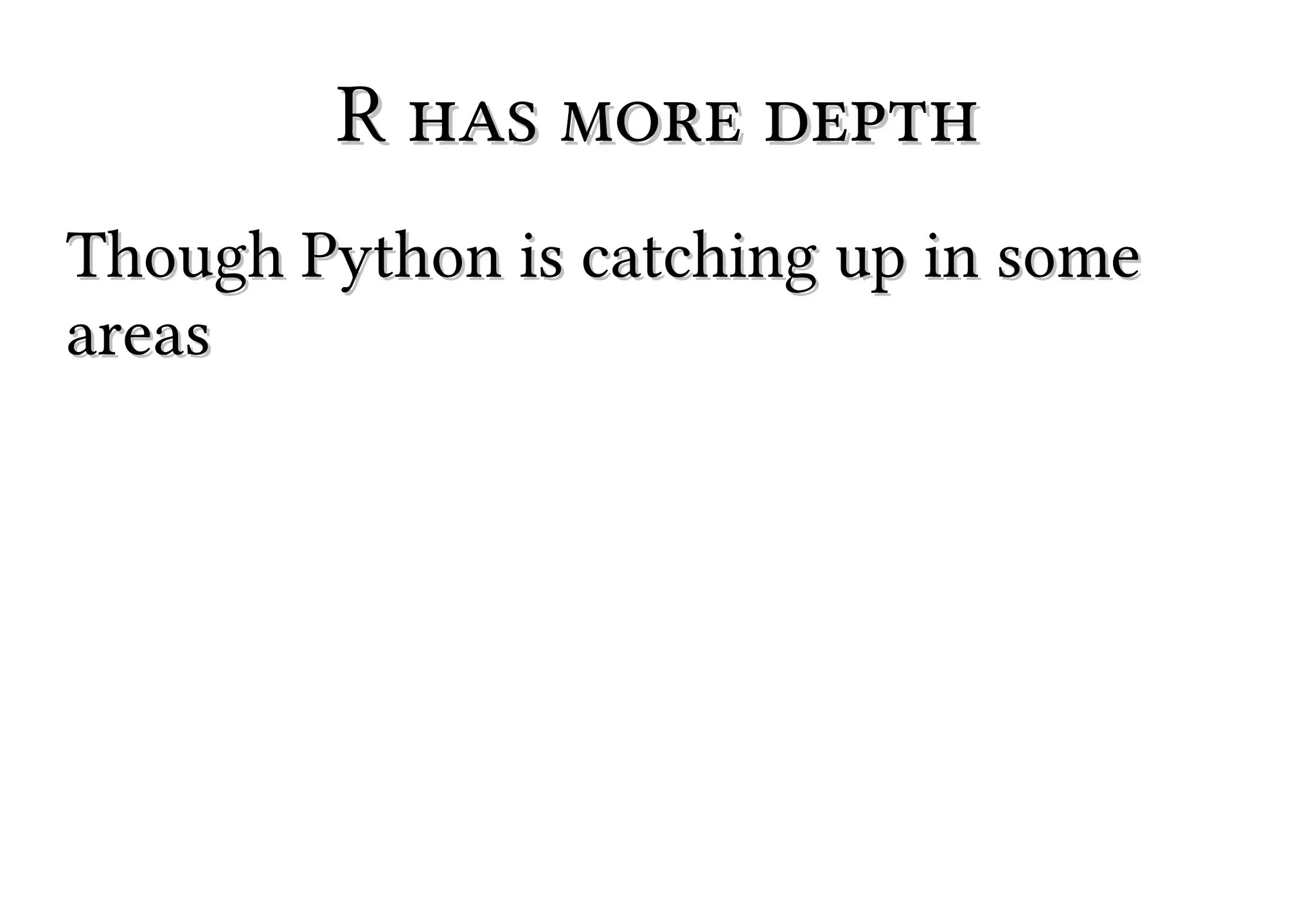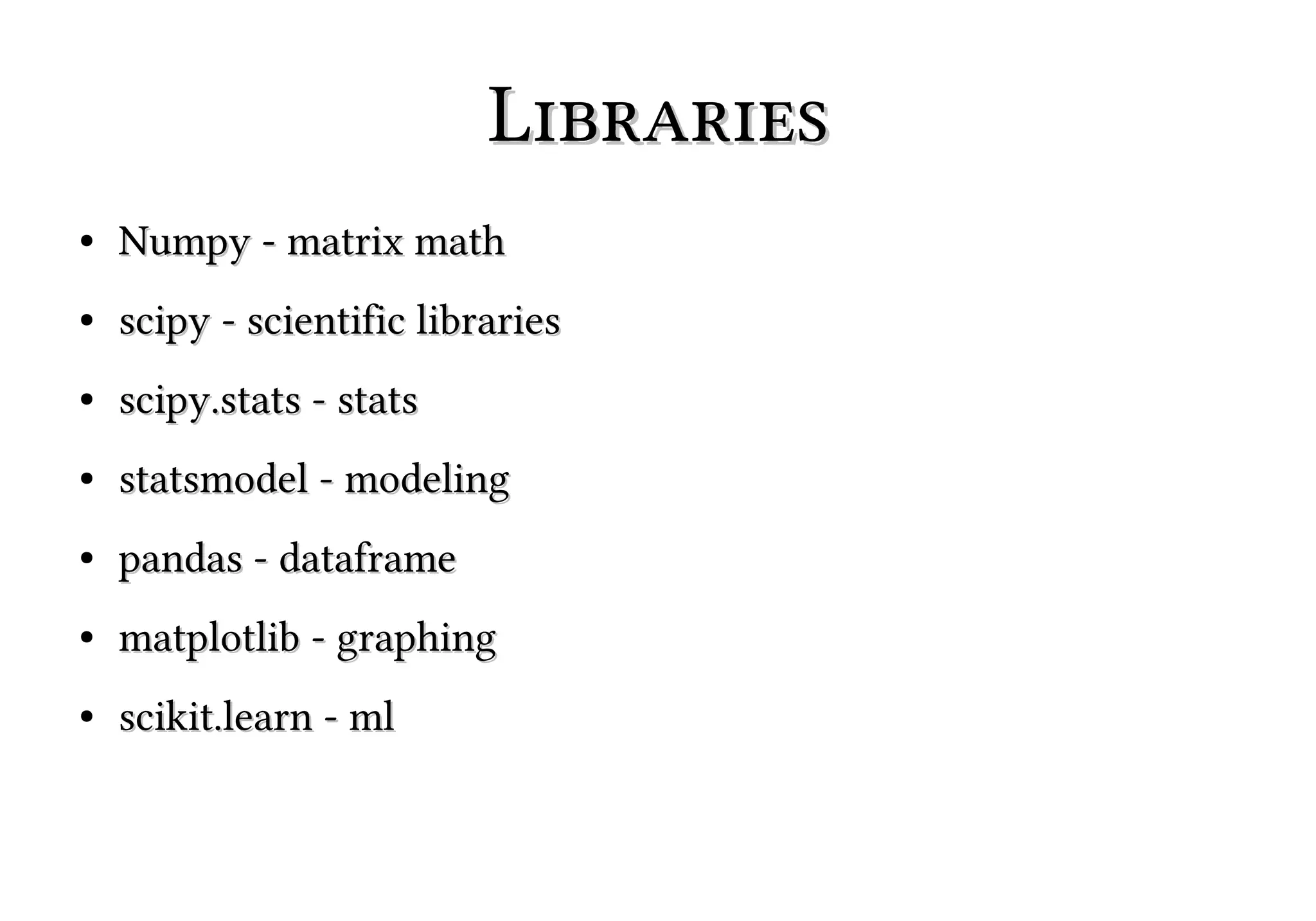The document discusses the advantages of Python as a general-purpose programming language, especially for data analysis and scientific applications. It highlights its extensive community support, built-in libraries, and multi-paradigm capabilities, while also addressing some limitations. Additionally, it mentions various Python libraries used for data science, including NumPy, SciPy, and Pandas.


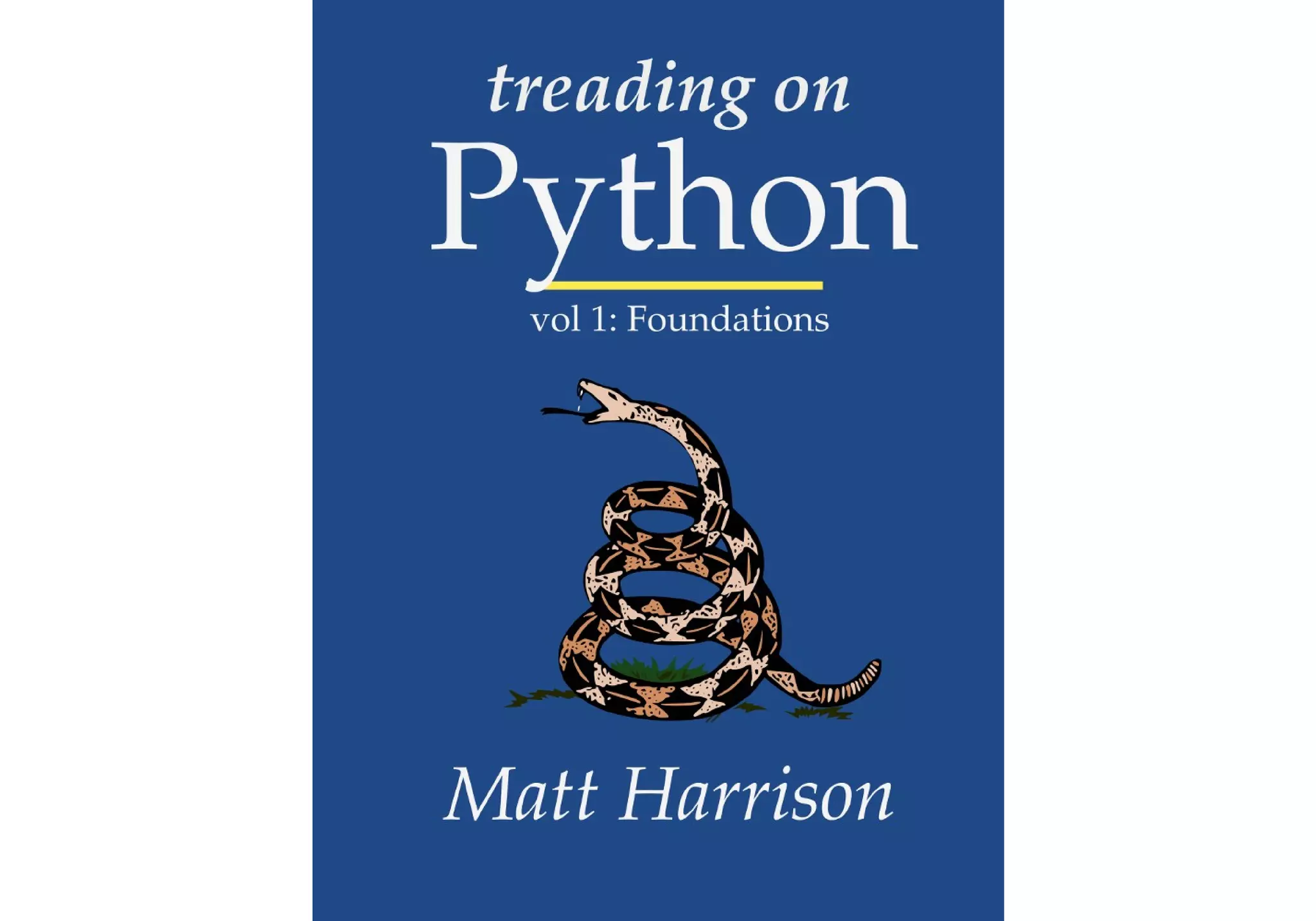
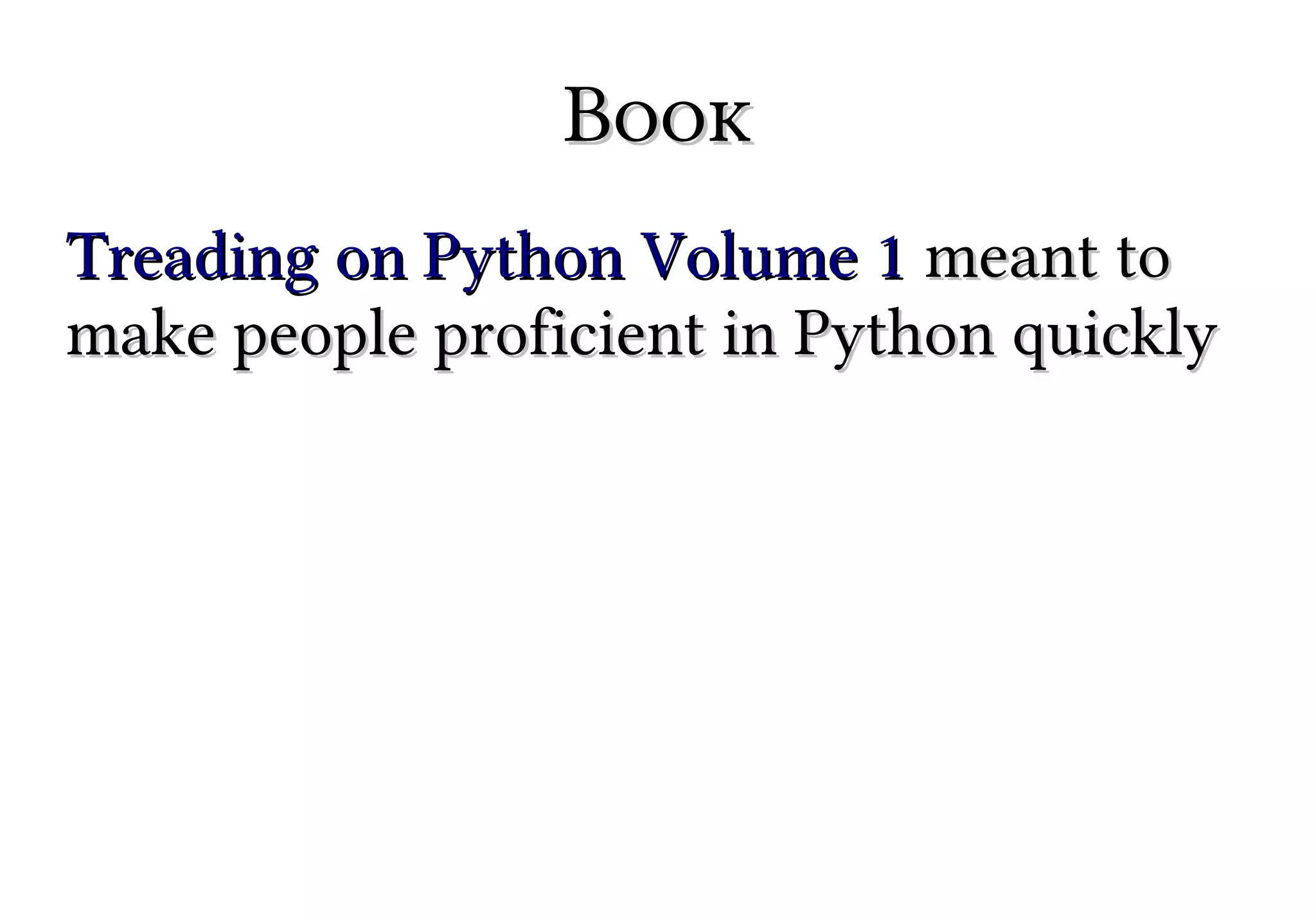

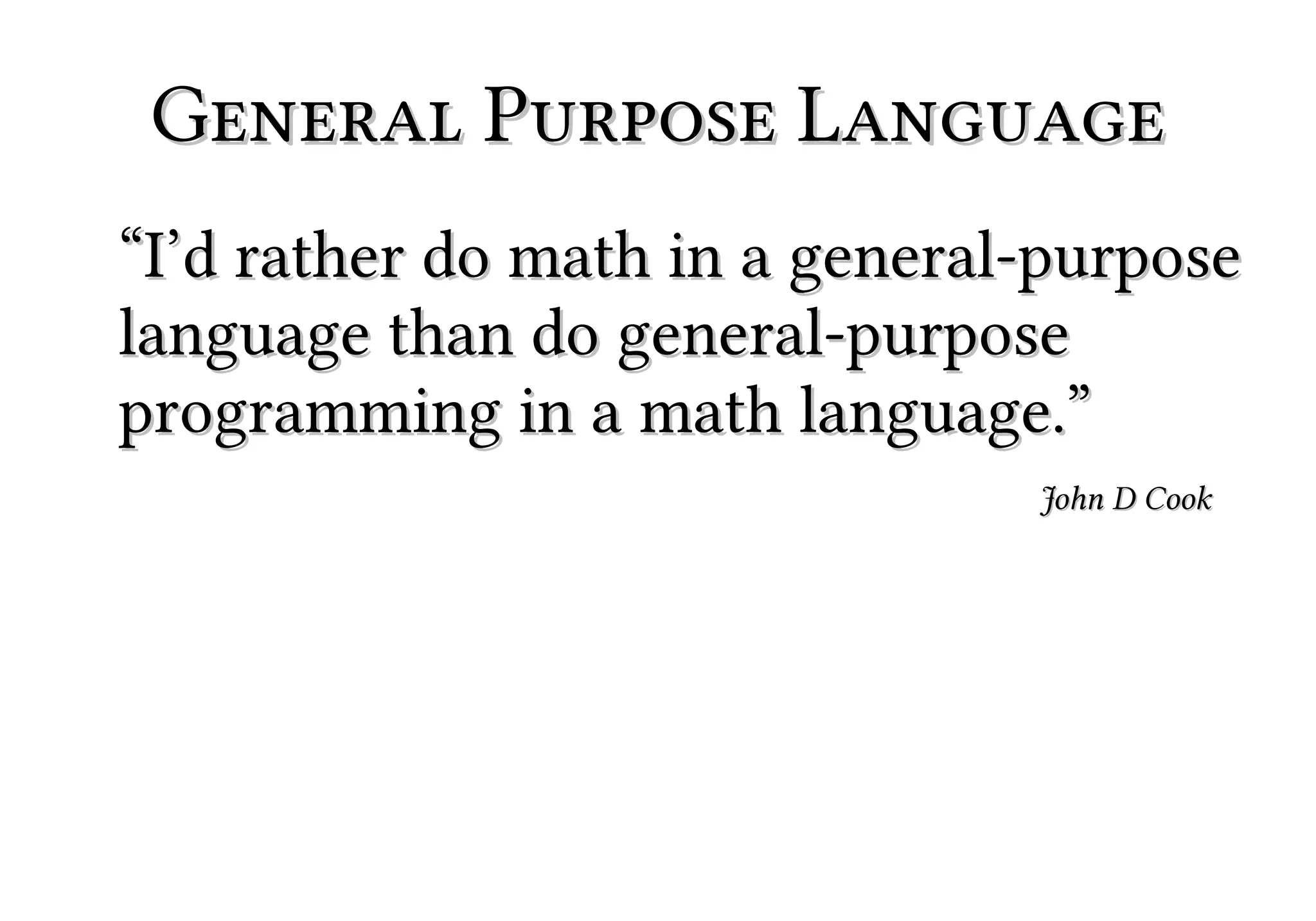
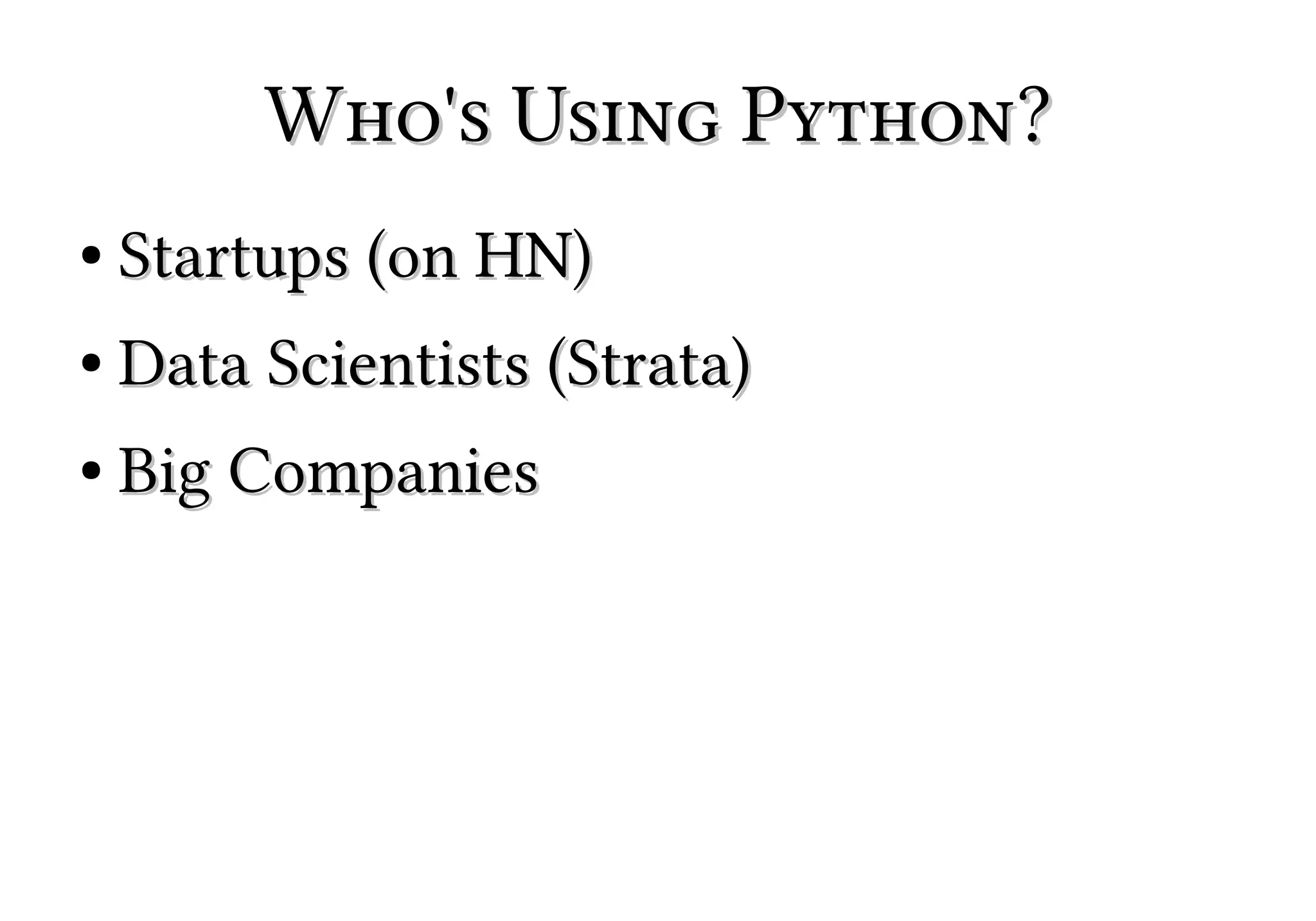


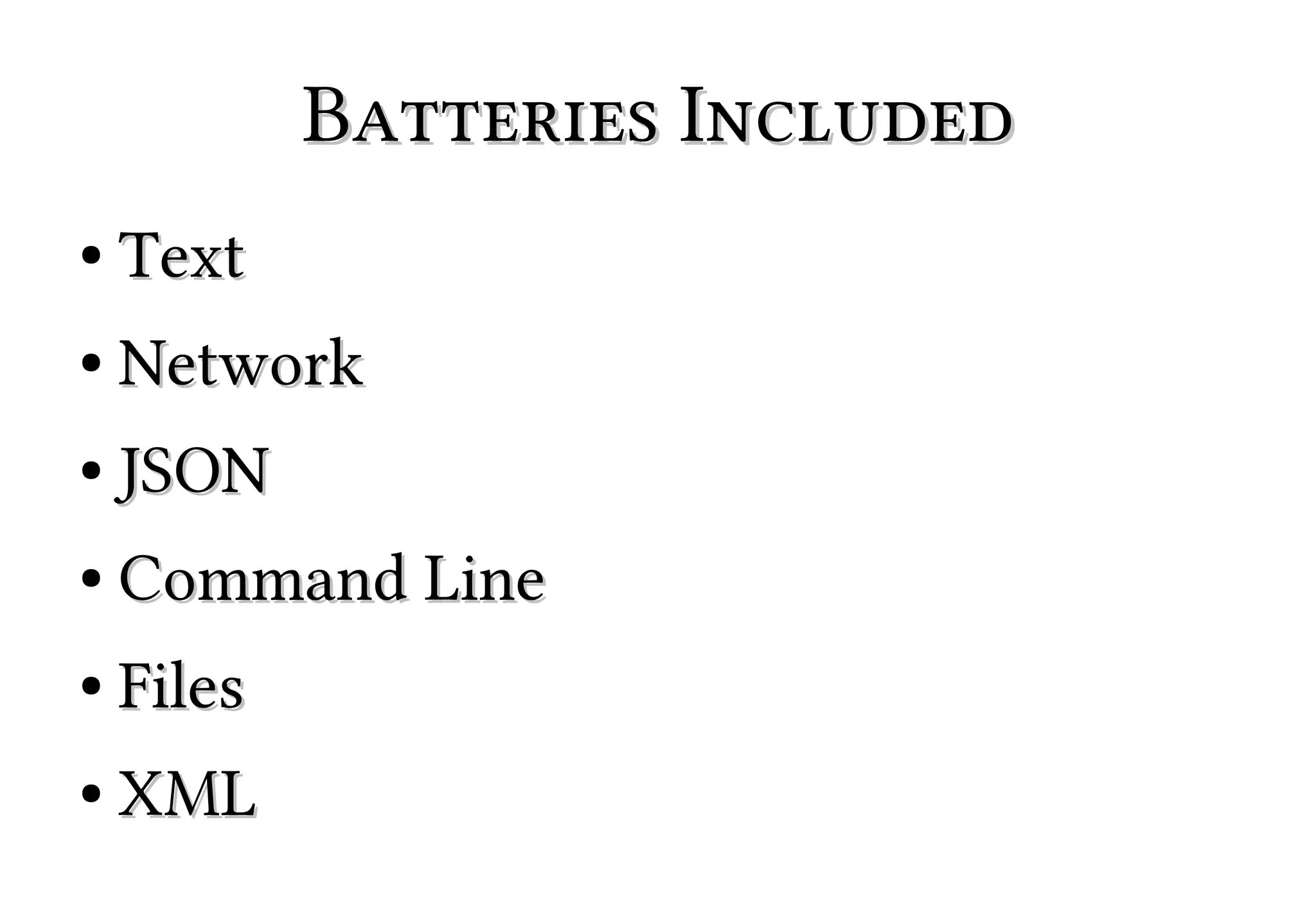
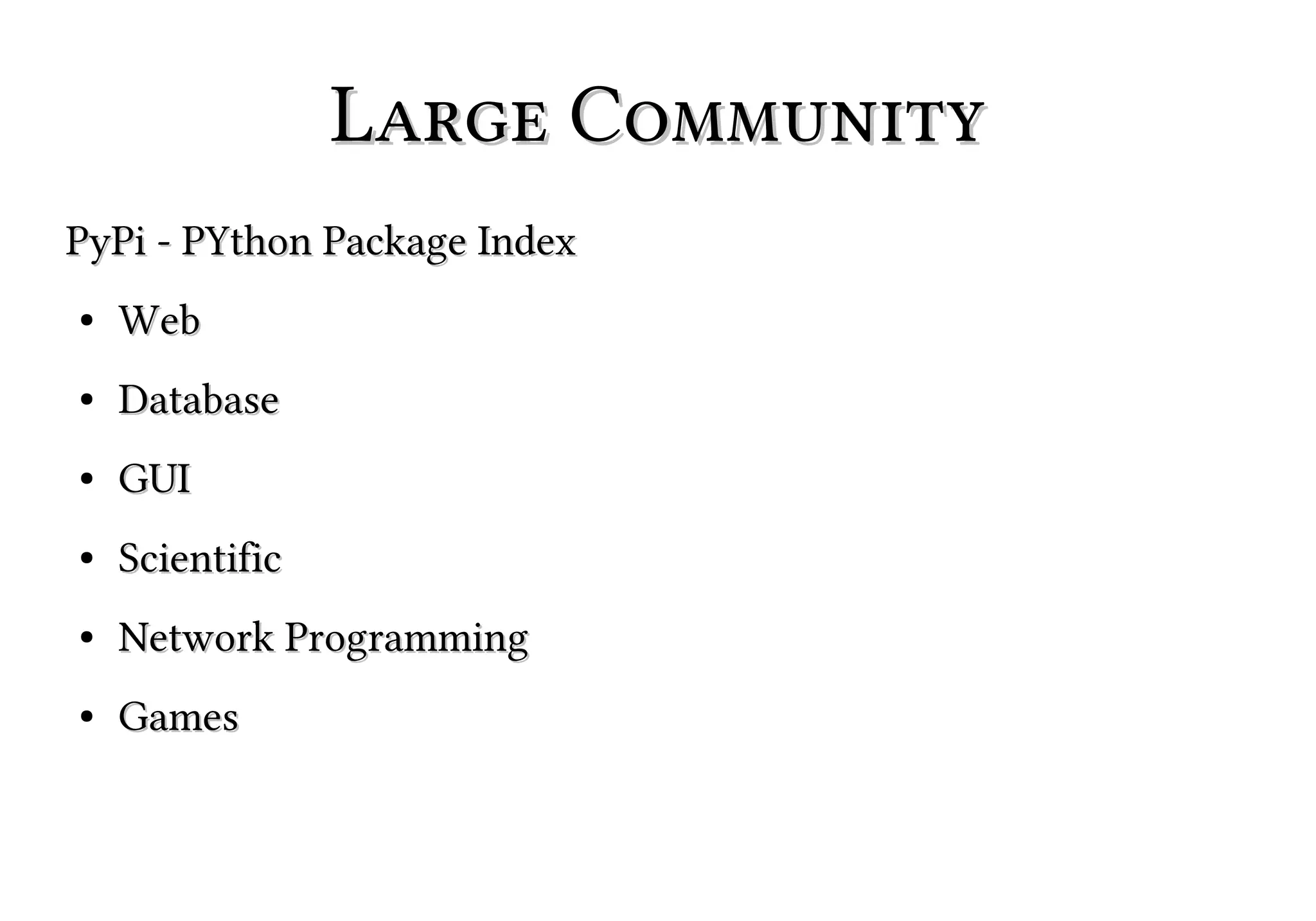
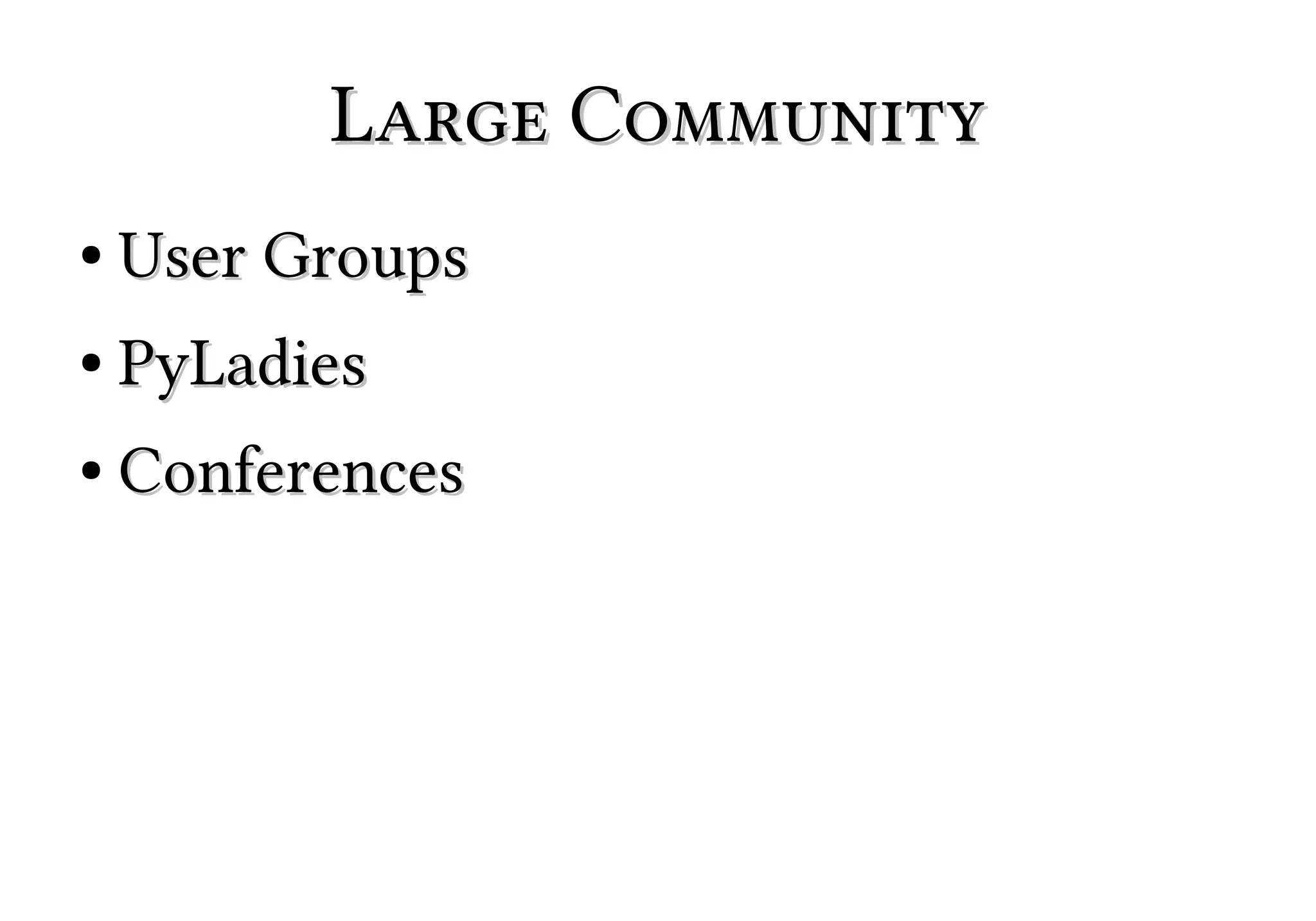

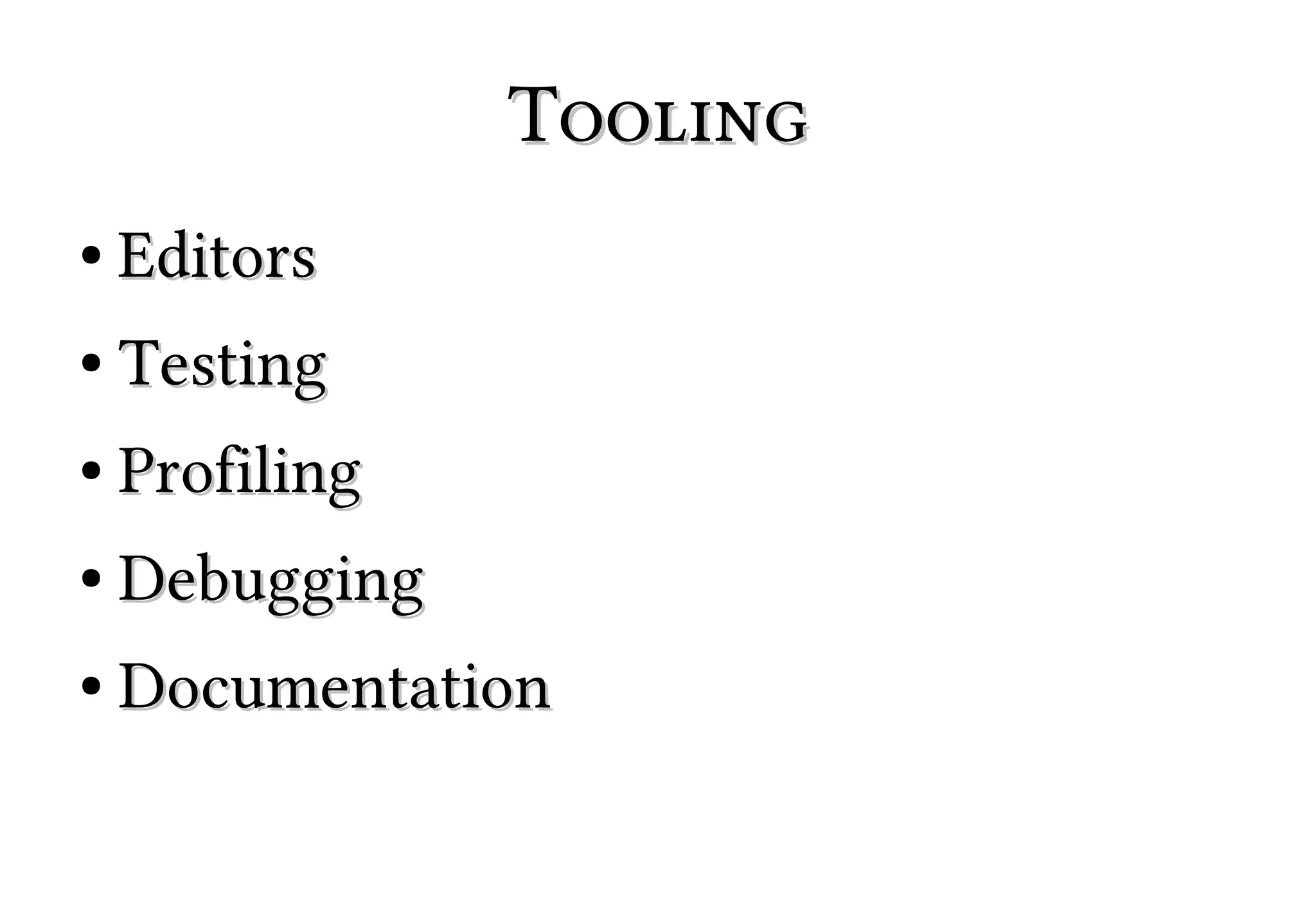

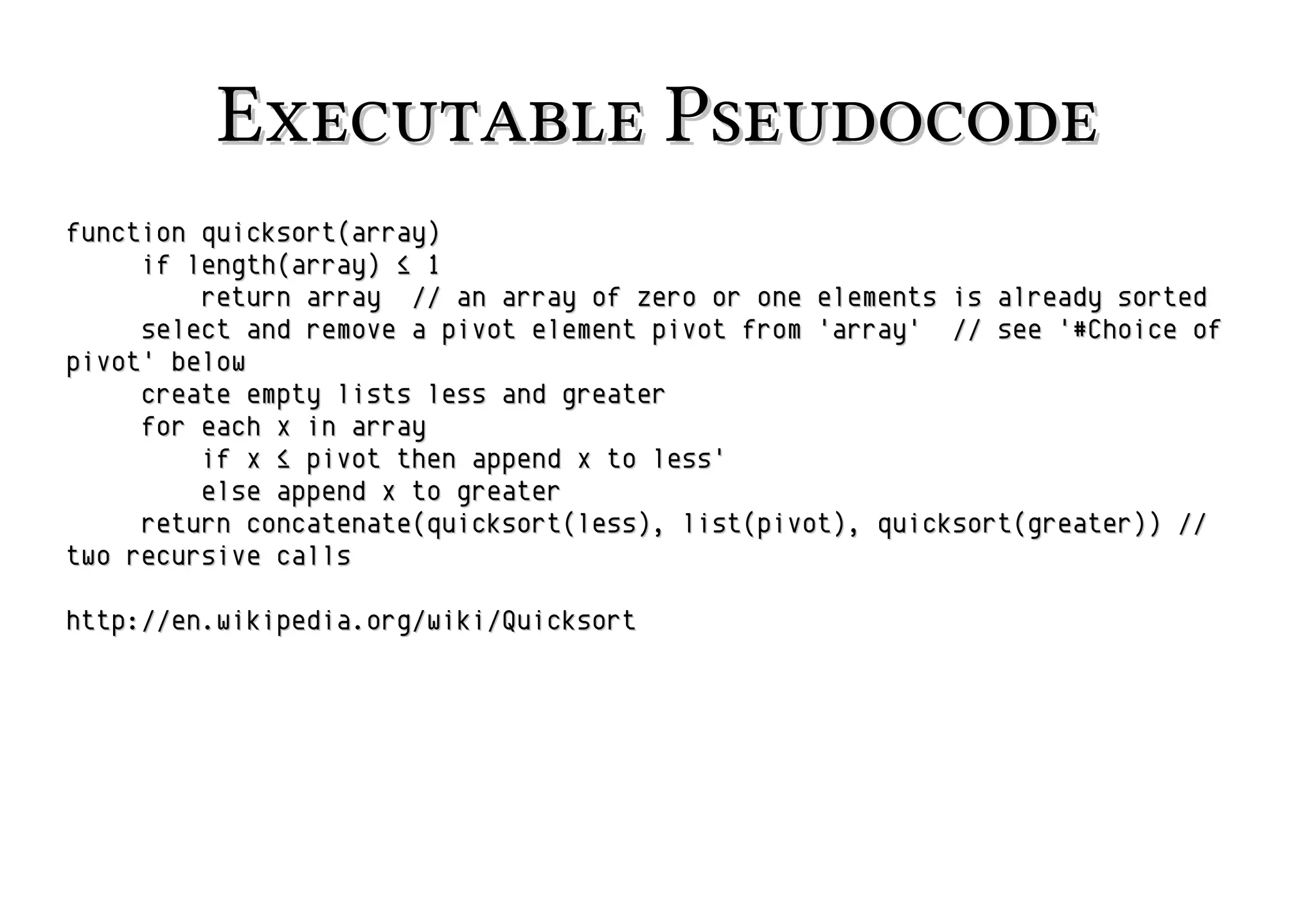
![Executable Pseudocode >>> def quicksort(array): ... if len(array) <= 1: ... return array ... pivot = array.pop(len(array)/2) ... lt = [] ... gt = [] ... for item in array: ... if item < pivot: ... lt.append(item) ... else: ... gt.append(item) ... return quicksort(lt) + [pivot] + quicksort(gt)](https://image.slidesharecdn.com/whypython-131111112046-phpapp01/75/Why-Python-for-Statisticians-17-2048.jpg)
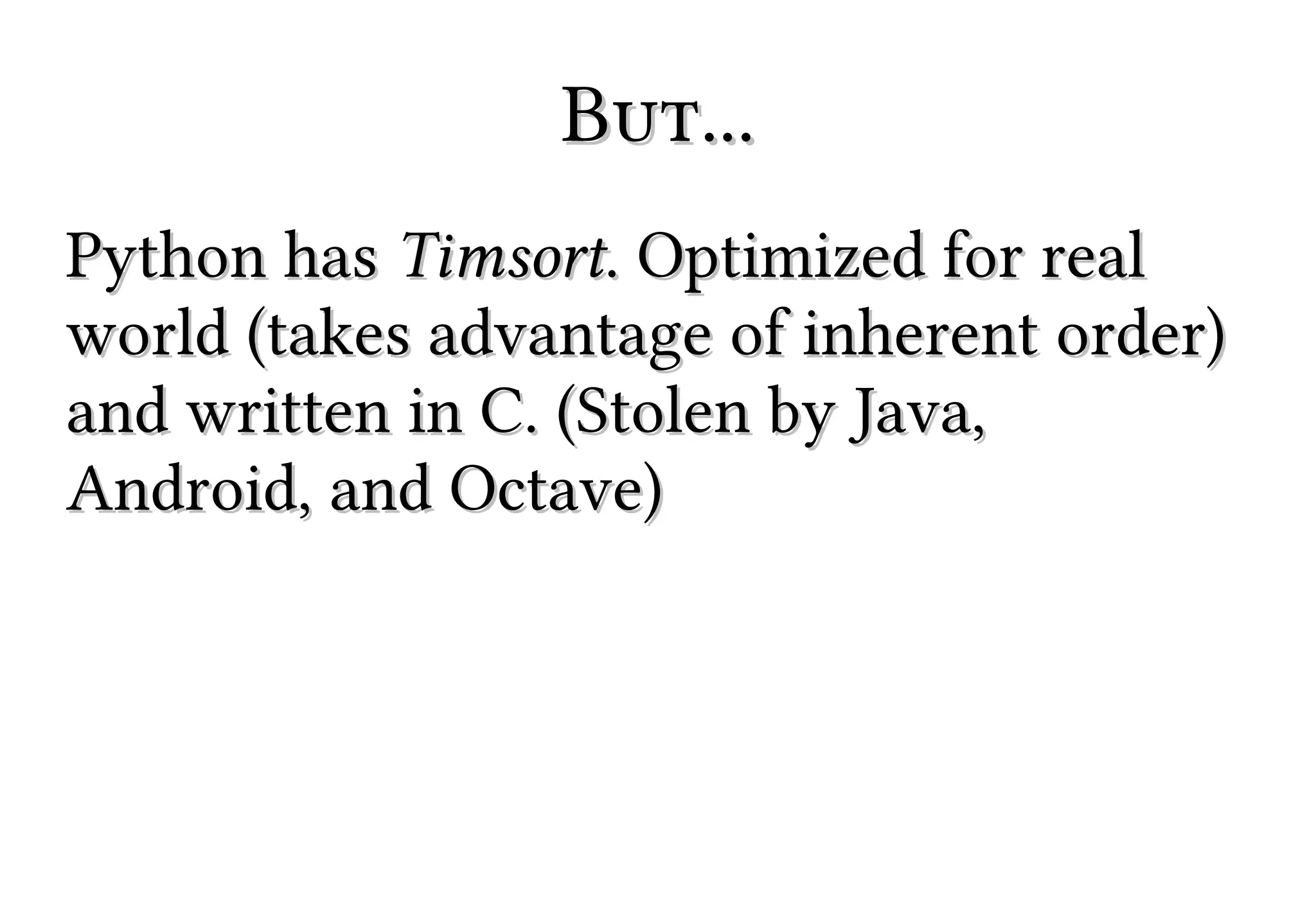
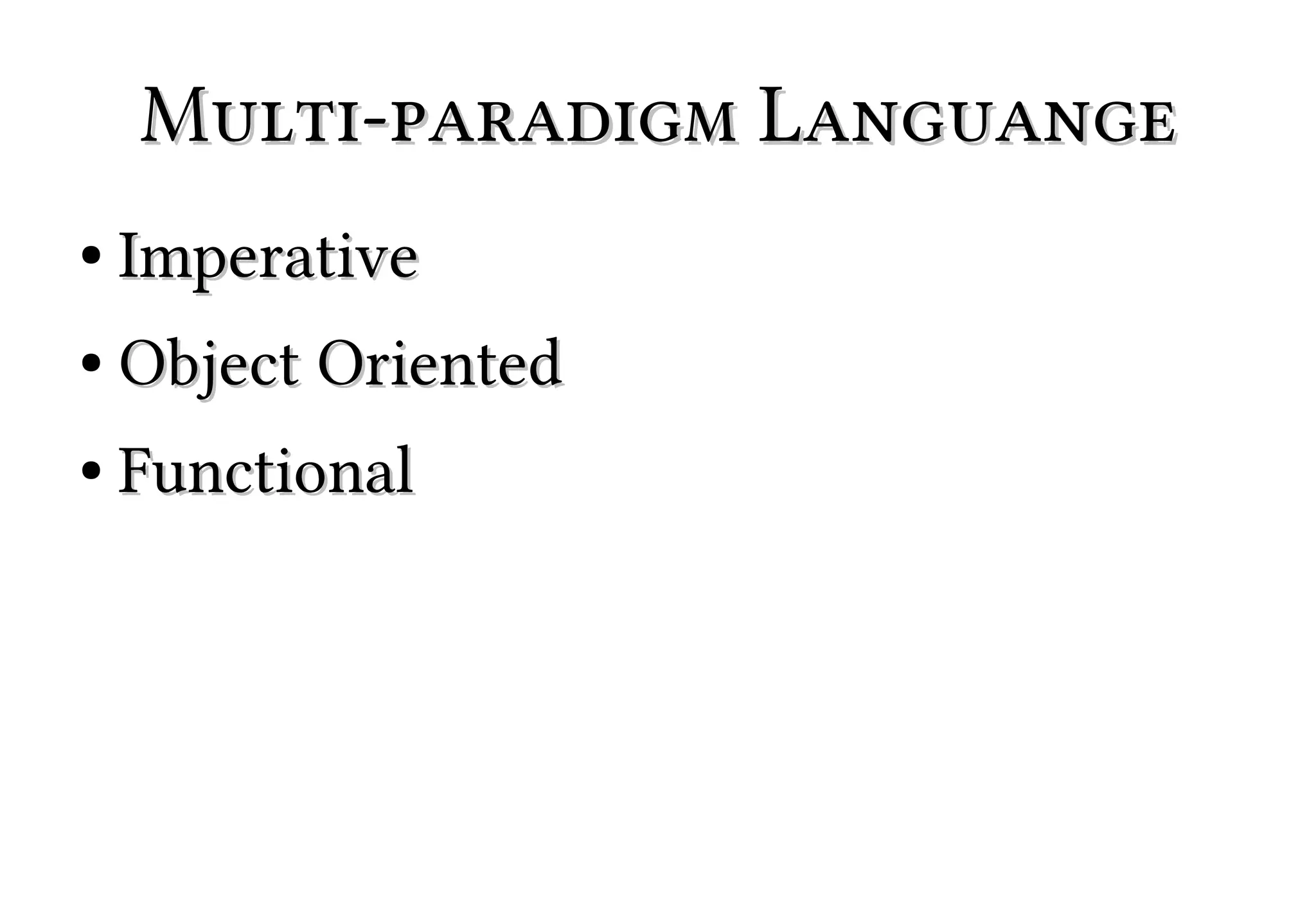
![Imperative >>> def sum(items): ... total = 0 ... for item in items: ... total = total + item ... return total >>> sum([2, 4, 8]) 14](https://image.slidesharecdn.com/whypython-131111112046-phpapp01/75/Why-Python-for-Statisticians-20-2048.jpg)
![OO >>> class Summer: ... def __init__(self): ... self.items = [] ... def add_item(self, item): ... self.items.append(item) ... def sum(self): ... return sum(self.items) >>> >>> >>> >>> 5 s = Summer() s.add_item(2) s.add_item(3) s.sum()](https://image.slidesharecdn.com/whypython-131111112046-phpapp01/75/Why-Python-for-Statisticians-21-2048.jpg)
![Functional >>> import operator >>> sum = lambda x: reduce(operator.add, x) >>> sum([4, 8, 22]) 34](https://image.slidesharecdn.com/whypython-131111112046-phpapp01/75/Why-Python-for-Statisticians-22-2048.jpg)



